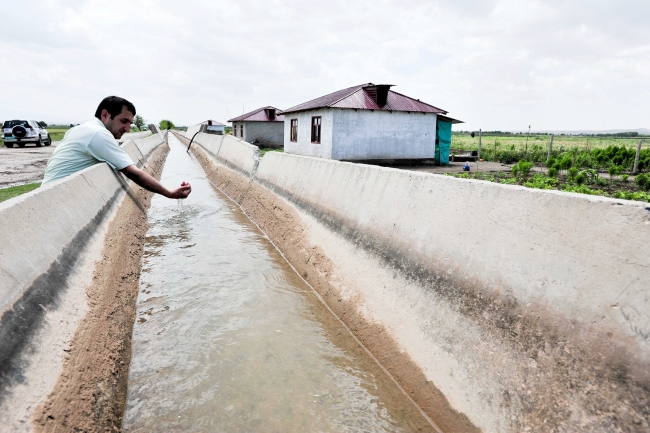‘Water Accounting Plus’ helps policymakers go with the flow
Measuring the amount of water in a river basin can be a slippery subject, but as the well-worn saying goes, if you can’t measure it, you can’t manage it.
But things are becoming easier, thanks to Water Accounting Plus (WA+).

This new online database will use satellite and hydrological data to show how much water is used in some of the world’s major river basins. It will calculate how much water enters the basin and how much leaves, providing a breakdown of what happened along the way.
It currently covers water use in the Nile River Basin, and will soon be expanded to include the Volta, Ganges and Mekong river basins.
“The livelihoods of over 1 billion people directly depend on the availability of water in these river basins,” said Poolad Karimi of the International Water Management Institute (IWMI), who led the development of the framework for WA+. “But even small changes in water management can have huge effects on those livelihoods and the resilience of surrounding ecosystems. WA+ helps us to get a better idea of what the impact of those changes could be and where improvements might be made. This means that it can help inform, for example, those developing policies on hydropower development and farming.”
The WA+ website allows users to check 16 key performance indicators for a basin or part of it, including evapotranspiration rates, groundwater storage and total water stocks. It also shows how much of a basin’s water is being consumed by different sectors, such as agriculture and industry, and how much is left for the environment.
“It’s just like financial accounting but for water,” continued Karimi. “You can find out how much water is being used each step of the way, from the top of the basin to where the rivers reach the sea.”
Basis for dialogue
WA+ builds on the concept of water accounting developed in the late 1990s. The new system brings in the power of remote sensing – satellite data – to improve the accuracy and geographical range of the assessments.
For Karimi, this will be particularly useful in large parts of Asia and Africa, where reliable information on water flows is either not collected or not publicly available. WA+ enables experts to measure these flows independently.
According to Karimi, using a consistent methodology also means that the data is more reliable and easier to compare between countries or regions. This is particularly relevant in river basins that span more than one country, such as the Nile, where there are often competing demands for limited water resources. He also believes that WA+ could act as a common platform and a basis for dialogue between countries.
Karimi hopes that the WA+ framework might also be adopted by those measuring progress towards the forthcoming United Nations Sustainable Development Goal (SDG) on water, which will come into effect in 2016.
Water Accounting was originally developed by David Molden, former Deputy Director General – Research at the International Water Management Institute (IWMI), and now Director General of the International Centre for Integrated Mountain Development (ICIMOD), Nepal. It has been modified and upgraded with inputs from the Delft University of Technology, the Netherlands.
Water Accounting+ was developed by Poolad Karimi (Postdoctoral Fellow – Hydrology and Water Accounting, IWMI), Wim Bastiaanssen (Professor of Global Water Accounting, UNESCO-IHE Institute for Water Education) and David Molden.
This work has been supported by the CGIAR Research Program on Water, Land and Ecosystems (WLE).

